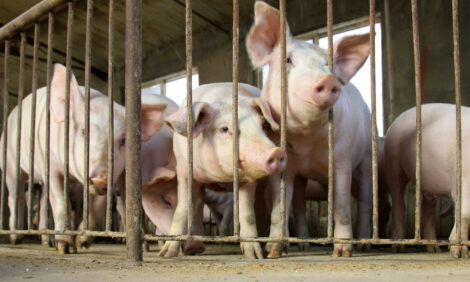



Pig Health, a Sow’s Legacy – Part 2
CANADA - This report is the second of a series on the latest insights into four maternally derived factors that impact pig health: mitochondria, fetal programming, the microbiome and factors transferred in colostrum/milk. The better we understand these, the better we can support them, writes Dr Joe Rogowsky, Director of Health and Biosecurity.A FAQ is what can one do to prevent the smalls, low via’s and preemies at birth. There may be an infectious cause, so ensure you explore this with your herd veterinarian, but most often it’s simply due to nature and nurture.
Phenotype at birth is largely determined by the nuclear DNA, the “software” passed on from the parents. Variance in that code is not only natural, it’s the key to adaptation and evolution. Smalls and low via’s may be the low end of the spectrum, but it’s the high end that gives us the opportunity for genetic progress.
Less understood is the impact of the mitochondrial DNA passed on from the sow. Packed in each egg in her ovaries are maternal mitochondria, up to 700,000 of them in each egg and the more the better.
These are the cellular “batteries” for the egg as well as the future pig (the boar’s mitochondria are destroyed). We know healthy and defective mitochondria can coexist within the same cell (heteroplasmy), defectives may be passed on from the sow, some defectives can arise during embryo development and the mitochondria are not segregated equally during cell division.
If the number of defectives reaches a threshold, a tissue, organ or body becomes dysfunctional. Congenital mitochondrial diseases are recognized in humans and dogs, but, so far, not in swine. Even if some of the smalls and low via’s are the result of a congenital mitochondrial disease, natural and smart selection will minimize their prevalence in the gene pool.
While good “software” and “batteries” determines the genetic potential, some of the smalls and low via’s are the result of gestational conditions that compromise the phenotype at birth. Flushing the last week prior to estrus is critical to egg health and energy status at ovulation, yet is a challenge to achieve in weaned sows.
But where there’s a will, there’s a way and it’s worth the extra effort.
The next key determinant is uterine crowding in early gestation and epigenetic (“on top of”) changes to the nuclear DNA referred to as prenatal or fetal programming, which has been well documented.
Gestation nutrition can cause epigenetic changes as well.
Finally, phenotype at birth is also affected by the nutrient supply during gestation, supporting or restricting fetal development (intrauterine growth restriction) as well as the sow’s oxidative status and gestation length (preemies).
Our knowledge of the nutrient requirements of a hyperprolific gestating sow is evolving and there are recognized opportunities 5-8, but we’ll just have to be patient as the science unfolds.
You can read Pig Health, a Sow’s Legacy – Part 1, here.







